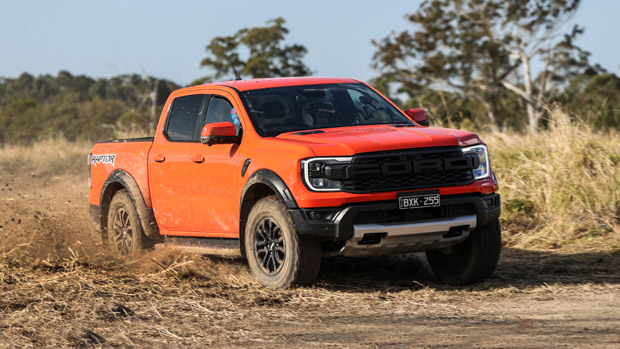-
Car Reviews
- Car News
-
Car Comparisons
Latest comparisons
- Chasing Deals
If we consider the Hilux and Ranger pickups as light commercial vehicles, the Model 3 has trumped all other cars in this year’s sales race
The Tesla Model 3 juggernaut only gets stronger.
In January, Australians bought 2927 Model 3 sedans after Tesla’s batch-order-style delivery system saw a large shipment of cars land in Australia, making it the third best-selling vehicle in our market.
It’s only the second time a pure battery electric model has ranked so highly: the Tesla Model Y midsize SUV had 4359 sales in September 2022.
With the Ford Ranger amassing 4749 sales (up 46.3 per cent over January 2022) and the Toyota Hilux managing 3245, these two have been cemented to the top of the monthly sales charts for years. But as these pickups are classed as light commercial vehicles, it’s the Tesla that leads the way amongst ‘proper’ cars and SUVs.
Trailing the Tesla were the Mazda CX-3 (2417 sales), Mazda CX-5 (2189), Toyota RAV4 (1958), Isuzu D-Max (1843), MG ZS (1842), Mitsubishi Outlander (1674) and Toyota Land Cruiser (1631).
The statistics show the Model 3 is not just an outlier by being pure electric, but also as a passenger car and not an SUV or ute. Tesla’s Model Y SUV shifted only 386 units in January, but this is a reflection on availability/deliveries rather than demand.
Early this year Tesla dropped the price of its Model 3 by up to $3100, and the Model Y by up to $3400, bucking the current trend of new car price hikes. This, and obvious availability, will have pushed the Model 3 onto the sales race podium.
In the second half of last year – when Tesla finally began releasing monthly Australian sales figures to the Federal Chamber of Automotive Industries – Model 3 and Model Y sales fluctuated wildly. This was simply due to availability of which model and when.
In the previous six months, including January 2023, Model 3 monthly sales have read: 1806, 391, 33, 1610, 2380 and 2937 – giving it an average delivery volume of 1526 cars.
The Model Y, meanwhile, has seen 460, 1805, 1076, 4359, 1017 and 386 cars delivered in that same period – giving it an average of 1517 cars delivered.
These numbers would see the Model 3 and Y outsold by cars such the CX-5 midsize SUV, Mitsubishi Triton and Isuzu D-Max, which all earn see consistently higher sales.
The top ten sellers for January 2023 included the MG ZS, which includes battery electric variants, and the Mitsubishi Outlander which includes plug-in hybrid variants.
If we look at battery electric (like the Tesla), hybrid (think Toyota RAV4 Hybrid) and plug-ins (Mitsubishi Outlander PHEV) sales combined, they made up over 12 per cent of January’s total market with 10,426 sales.
Full electric vehicles represented almost six per cent (4852 sales), with Tesla accounting for a dominating 3313 of that number.
Conventional (series parallel) hybrids are by far the popular choice over plug-in hybrids, mainly due to very few PHEVs on our market. Hybrid sales were 5136 in January – the vast majority being Toyotas – and PHEVs had 438 sales.
The Ford Ranger is kicking serious goals. It trumped its key rival Toyota Hilux by over 600 units in January, and must be seen as a significant threat to Hilux’s long-running crown as the year’s best seller.
When end-of-year sales numbers are tallied, The Toyota Hilux has been Australia’s sales champ the last seven years in a row.
In good news for the industry, and signifying improved supply of new cars, 84,873 vehicles were delivered in the first month of the year; a 12 per cent increase over the same month in 2022.
As usual, SUVs (46,698) and light commercial vehicles (18,546) made up the majority of sales: 77 per cent of the total were from these two segments alone.
Toyota’s market share wasn’t as dominant as usual at 15.7 per cent of all cars sold. This time last year it was above 20 per cent.
Second was Mazda (11.1 per cent), Ford third (7.8 per cent), Kia fourth (7.1 per cent) and Hyundai fifth (6.8 per cent). The Aussie love affair with MG continues: the Chinese brand was in seventh place with 4.7 per cent market share.
Latest news
About Chasing cars
Chasing Cars reviews are 100% independent.
Because we are powered by Budget Direct Insurance, we don’t receive advertising or sales revenue from car manufacturers.
We’re truly independent – giving you Australia’s best car reviews.




